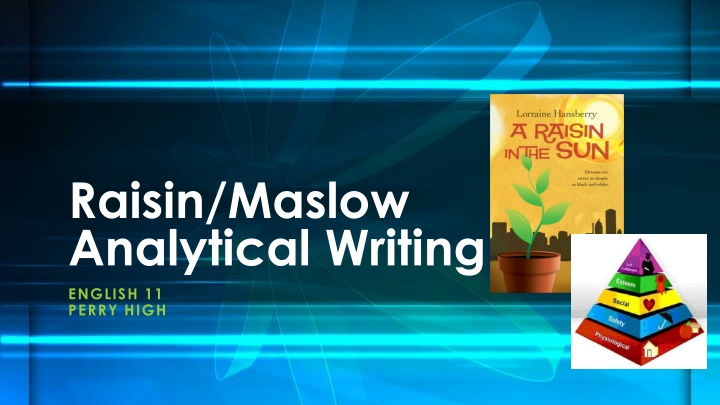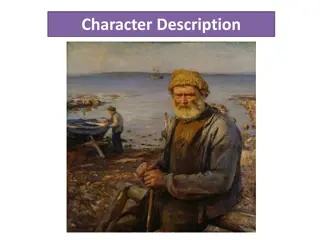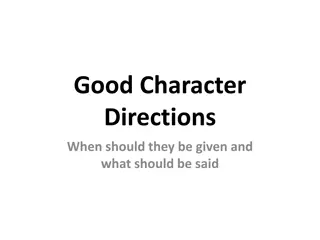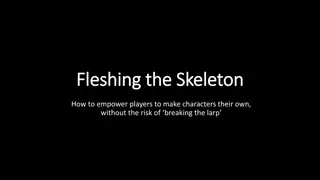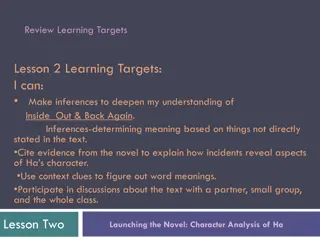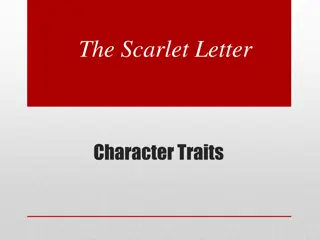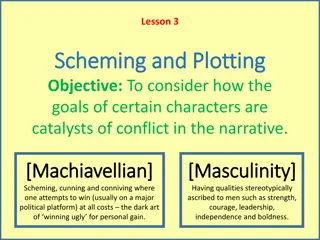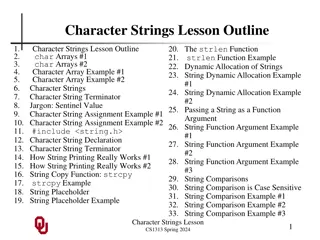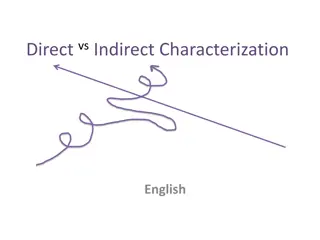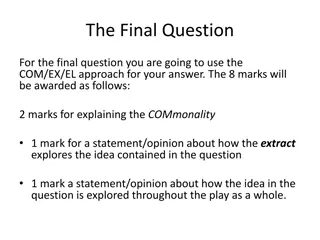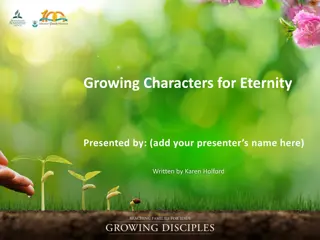Character Analysis in English 11
character analysis through Maslow's Hierarchy of Needs in English 11 class using examples from "The Great Gatsby" and "A Raisin in the Sun." Understand how characters' actions relate to their psychological needs.
Download Presentation

Please find below an Image/Link to download the presentation.
The content on the website is provided AS IS for your information and personal use only. It may not be sold, licensed, or shared on other websites without obtaining consent from the author.If you encounter any issues during the download, it is possible that the publisher has removed the file from their server.
You are allowed to download the files provided on this website for personal or commercial use, subject to the condition that they are used lawfully. All files are the property of their respective owners.
The content on the website is provided AS IS for your information and personal use only. It may not be sold, licensed, or shared on other websites without obtaining consent from the author.
E N D
Presentation Transcript
Raisin/Maslow Analytical Writing ENGLISH 11 PERRY HIGH
Analytical Statement Practice With your partner, discuss how a character from The Great Gatsby, by F. Scott Fitzgerald, works to and write one SEE-set explaining where he/she falls on Maslow s Hierarchy of Needs chart. S: Statement - define character s level on Hierarchy E: Example - textual support for statement with citation E: Explanation - connect your example to the character s level of need (Be sure to fully develop your position/thought process)
Analytical Statement Example S In the novel The Great Gatsby, the character Tom Buchanan operates on Level 4 (Esteem) of Maslow s Hierarchy of Needs. E At dinner with Nick, Daisy and Jordan, Tom implores his audience to read a book about white supremacy. He states, "Well, it's a fine book, and everybody ought to read it. The idea is if we don't look out the white race will be will be utterly submerged. It's all scientific stuff; it's been proved" (Fitzgerald 78). E - Here Tom exhibits his insecurity. Although he is someone born into incredible money and privilege, there s a fear it could be taken away by social climbers. This insecurity drives him to attempt to develop his sense of esteem as he works to keep others such as people of color and newfound riches (like Gatsby) down. He is desperately trying to build his self-esteem and worth by oppressing others.
Individual Analysis Assignment Now that you have practiced an analytical statement with a partner, you will complete this task on your own. In a well-developed 3 SEE-set paragraph, use a character you have been tracking to analyze where he/she falls on Maslow s Hierarchy of Needs. Cite your evidence with page numbers from the book. You may use this space to outline your SEE-sets; however, your completed task be submitted on the final copy paper.
Suggested Outline Format Topic Sentence: Statement connecting Raisin in the Sun character to Maslow s Hierarchy of Needs Statement: define character s level on hierarchy Evidence: provide textual support for statement with citation (page number) Elaboration: connect your example to the character s level of need (Be sure to fully develop your position/thought process) Statement Evidence Elaboration Statement Evidence Elaboration Conclusion Sentence: re-state topic sentence in a different way. Leave the reader something to think about.
Topic Sentence Example In the drama, A Raisin in the Sun, by Lorraine Hansberry, the character ______________ works to satisfy his/her needs as they appear on Maslow s Hierarchy of Needs.
Raisin Character SEE-set Example S Beneatha operates on Level 4 (Esteem) of Maslow s Hierarchy of Needs. E In Act I of the play, Beneatha states, I m going to be a doctor, and George, for one thinks that s pretty funny. I couldn t be bothered with that. I m going to be a doctor and everybody around here better understand that (Hansberry 50). E This is an example of how Beneatha works to fight the stereotypes that permeate American society in the 1950s. Most of society believed that women should be restricted to housekeeping and domestic duties. If they did work outside of the home, women were often secretaries, teachers and nurses. The idea that a woman (and an African-American at that) could be a medical doctor was not only radical, it bordered on a kind of blasphemy. But Beneatha is persistent and confident; she will not let anyone stand in her way. Her need to fulfill her sense of esteem drives her will to go where very few African- American woman have gone.
S Another way in which Beneatha operates on the esteem level of Maslow s Hierarchy of Needs. E In Act II of the play, Beneatha argues with George. She states, Blah blah blah blah blah blah blah blah blah blah blah blah blah blah blah blah blah blah blah blah blah blah (Hansberry 88). E This is an example of how Beneatha works to blah blah blah blah blah blah blah blah blah blah blah blah blah blah blah blah blah blah blah blah blah blah blah blah blah blah blah blah blah blah blah blah blah blah blah blah blah blah blah.
